By Daniel R. Champagne
On the morning of June 6, 1944, the 2nd Ranger Battalion, commanded by Lt. Col. James Earl Rudder, began its ascent of a sheer 100-foot precipice called Pointe du Hoc. Its mission was to destroy a battery of long-range 155mm guns perched atop the craggy heights that were capable of raining down destruction on Utah and Omaha Beaches. According to General Omar Bradley, commander of the U.S. 12th Army Group, “It was the most dangerous mission of D-Day.” The Pointe du Hoc Rangers would definitely have their work cut out for them.
Inching their way toward the rocky summit, the Rangers dodged rifle fire, grenades, and rocks from the German defenders above. After suffering appalling casualties, the Rangers finally made it to the top of the ominous cliff. Moments later, elation turned to disbelief as the GIs discovered that the big gun emplacements atop Pointe du Hoc were empty.
Unfortunately, history is rife with misconceptions. In the past, some writers have wrongly concluded that the Rangers fought and died in vain since the guns had been withdrawn from the fortified area around Pointe du Hoc. On the contrary, the Rangers’ mission at Pointe du Hoc was critical to the ultimate successes at both Utah and Omaha Beaches. Through sheer determination and extraordinary courage, the 2nd Rangers penetrated Hitler’s formidable Atlantic Wall, located and destroyed the unguarded but operational coastal guns that were later found in an orchard, cut off enemy communications, and held their positions against fierce German counterattacks.
On the afternoon of D-Day–1, Rudder spoke to the men of the 2nd Ranger Battalion aboard the transport ship Prince Charles. Rudder was going to lead the men of Companies D, E, and F on a direct assault at Point du Hoc, while Companies A, B, and C waited offshore as a support force. “Boys,” he said, “you are going on the beach as the first Rangers in this battalion to set foot on French soil. Good luck and may God be with you.”
Target: Pointe du Hoc
The overall mission plan was to employ the Rangers as an independent task force in support of the Normandy invasion. It was determined that one of the most significant strategic objectives would be to destroy the coastal defense battery at Pointe du Hoc. The German battery was located four miles west of Omaha Beach and was believed to consist of six 155mm howitzers. The huge guns were mounted on massive wheels and secured to a central pivot on a concrete emplacement about 40 feet in diameter. Netting was used to camouflage each piece. There were no gun turrets or shields; instead, a reinforced concrete observation post helped direct the deadly fire. The range of the guns was 25,000 yards (10 miles). At that distance, they could easily wreak havoc on both Utah and Omaha Beaches and prevent troop ships in the English Channel from coming too close to shore.
According to senior German commanders, the Pointe fortress was virtually impregnable by land or sea. The battery was situated on the flat tableland of Pointe du Hoc, which terminates abruptly in rocky cliffs 85 to 100 feet high. The craggy rock face juts out awkwardly into the English Channel, forming a giant geological arrowhead with two distinct flanks east and west. Guarding the eastern approaches were gun positions one, two, and three, and defending the western sector were guns four, five, and six.
At the water’s edge was a narrow strip of beach that led up to the cliff bottoms, making an assault landing extremely difficult. Protecting the guns on both flanks was a strong defensive line of antiaircraft guns and machine-gun nests. The Germans also built underground concrete shelters and magazines that were connected to the gun emplacements by a sophisticated maze of trenches. In addition, the fortress was encircled with mines, booby traps, and barbed wire.
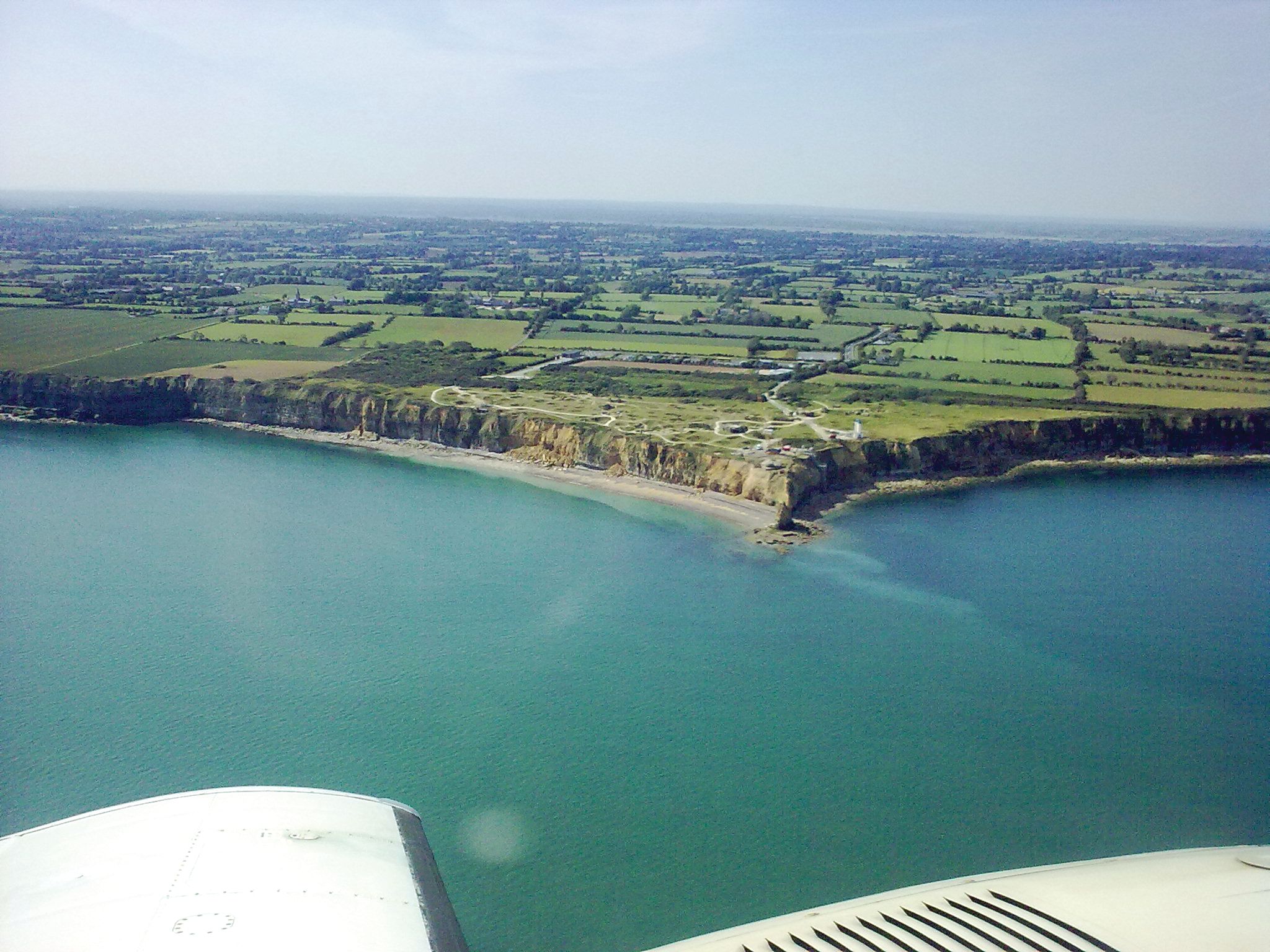
Private First Class Morris Prince, A Company, 2nd Ranger Battalion, summed up the grim predicament: “The Pointe was a massive fortress…. No wonder Hitler, himself, had boasted of the impunity of this position and of the foolishness of the Allies to ever think, less try, to break through this impregnable fortress.”
When Bradley informed Rudder that Pointe du Hoc was the strongest position on the Normandy invasion front and the success of the American landings at Utah and Omaha Beaches depended on the elimination of the big guns, Rudder responded: “Sir, my Rangers can do the job for you.”
One Chocolate Bar, Two Grenades and an M-1 Garand Rifle for the Pointe du Hoc Rangers
The provisional Ranger Task Force (2nd and 5th Rangers) commanded by Rudder was temporarily attached to the 116th Regiment, 29th Infantry Division. For organizational purposes, the commanders decided to split the force into three sections, Task Forces A, B, and C. Task Force A consisted of a headquarters detachment and Companies D, E, and F from the 2nd Battalion. At H-Hour, 6:30 am, they would land on Beach Charlie, four miles west of Omaha Beach. Company D of the Pointe du Hoc rangers would land on the western side, while Companies E and F hit the east side. Their mission was to scale the sheer cliffs and destroy the guns and other fortifications in the area. Next, they would advance inland and secure the coastal highway, preventing the Germans from reinforcing the American beaches. Task Forces B and C would be operating in supporting roles.
For the first wave, it was determined that 10 LCAs (landing craft assault) would be sufficient to land the three companies of Rudder’s Rangers, approximately 20 men to a boat. Each craft was fitted with three pairs of rocket mounts located at the bow, amidship, and stern and rigged so they could be fired in pairs from the control point at the stern.
One pair of rockets carried plain three-quarter inch ropes that were attached to the rocket base by connecting wire. Fitted to a second pair of rockets was a rope and toggle system that could manually be coupled with small wooden crossbars. The third pair of rockets was attached to rope ladders. Each rocket was topped off by a three-pronged steel grapnel. In the event that the onboard rocket-powered ropes were unsuccessful, each LCA carried a portable hand-held projector rocket attached to plain ropes.
The Rangers were also equipped with two types of extension ladders. The 112-foot ladders, which would arrive with the first wave, consisted of 28 four-foot tubular steel sections weighing four pounds each. They were assembled in advance in 16-foot lengths. Following on the heels of the first wave were four amphibious DUKW craft, two of which would be carrying 100-foot extension ladders. These were the fire fighting type on loan from the London Fire Brigade. In addition, twin Lewis machine guns were mounted to the tops of each ladder.
Because speed was essential for this mission, the Rangers would be equipped for limited action. Each man would carry a chocolate D-bar for rations, two grenades, and a M1 Garand rifle. The good climbers went first, carrying pistols or carbines. Each company had four Browning Automatic Rifles (BAR), two light mortars, and 10 thermite grenades. Coming in behind the assault wave were two supply boats carrying the Rangers’ packs, extra rations and ammunition, two 81mm mortars, explosives, and equipment for hauling supplies up the cliffs.
The Rangers would be supported by the Air Corps, Navy, and airborne troops. Weeks prior to the invasion, U.S. Eighth Air Force and British Royal Air Force bombers pummeled the Pointe in an effort to soften it up for the assault force. At H-Hour minus 20 minutes, the U.S. destroyer Satterlee and British destroyer Talybont would rake the area again with their big naval guns. Meanwhile, paratroopers and glider troops would create chaos and disorder in the German rear by cutting off communications, inflicting casualties, and tying up the enemy’s reserves.
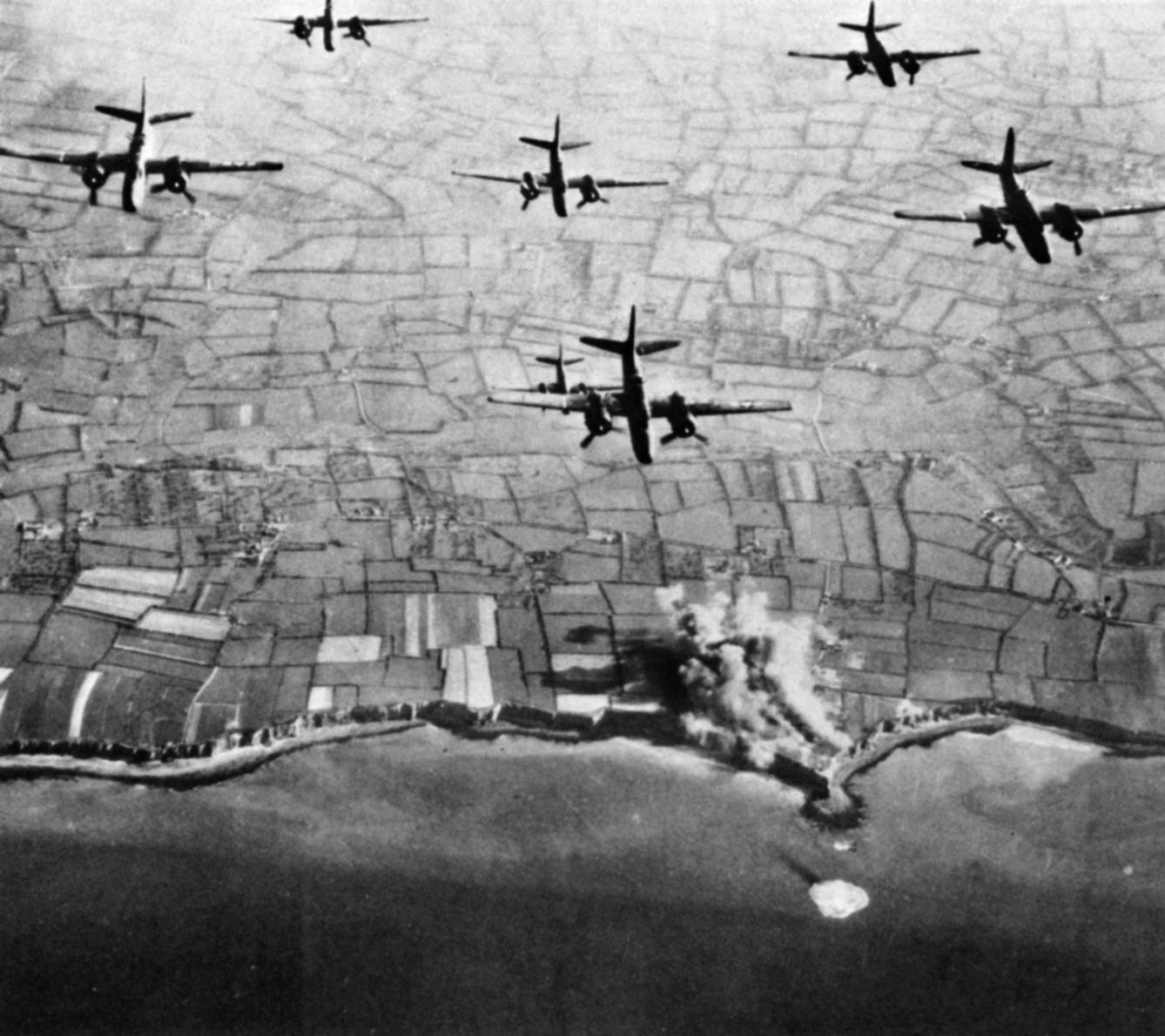
“Rangers! Man Your Craft.”
Allied commanders assumed that the massive bombing would take its toll on the German defenders at Pointe du Hoc. Unfortunately, the Allied bombardment lacked the punch to truly be effective. In fact, it would not be realized until much later that the bombing had missed its mark by about three miles. Consequently, the American GIs would be confronting a well-entrenched enemy on the craggy heights overlooking Utah and Omaha Beaches.
Allied intelligence had confirmed that elements of the 832nd Army Coastal Battery were manning the big guns on Point du Hoc. In addition, the unit was supported by approximately 200 artillerymen and infantrymen from the 716th Infantry Division. The regiment was made up of 40 percent non-German soldiers of whom 75 percent were Polish. The artillerymen were positioned near St. Pierre du Mont, and a reserve battalion was stationed at Bayeux.
At 4 am on June 6, the order roared: “Rangers! Man your craft.” The men from Companies D, E, and F, along with a detachment from Headquarters Company, boarded 11 LCAs. Each boat carried 22 men and supplies. In a matter of minutes, the boats had been lowered by ropes and pulleys. As the bobbing assault craft circled and waited for the order to move in, the prebombardment salvo commenced.
Prince vividly recalled the fireworks: “A rending and thunderous ovation of shell whizzing overhead signaled the beginning and the breaking loose of all hell. Our supporting Navy was starting its process of softening up the enemy’s beach defenses. As yet we were still out of the enemy’s accurate firing range, although some return shells did land to our rear. The distant and distinct hum of friendly aircraft became audible and soon the planes and bombers became visible.”
Soaked to the Bone
At 4:30, the LCAs were given the order to form up side by side and head for shore. Almost immediately, the rough seas imperiled the small craft. LCA 860 was swamped by a huge wave and went down. Captain Harold “Duke” Slayter, D Company commander, and most of his men were rescued a few hours later. Unfortunately, four of his Rangers were lost.
In the rescue vehicle on the way back to the mother ship, a shivering Slater requested: “Give us some dry clothes, weapons and ammunition and get us back into the Pointe. We gotta get back.” The survivors were so numb from the frigid Channel waters that the ship’s doctor had to order their return to England for immediate hospitalization.
From the onset, the Rangers were soaked to the bone, and the motion of the rough water made many deathly ill. Inside the LCAs, water and vomit intermingled, sloshing about on the boat floor.
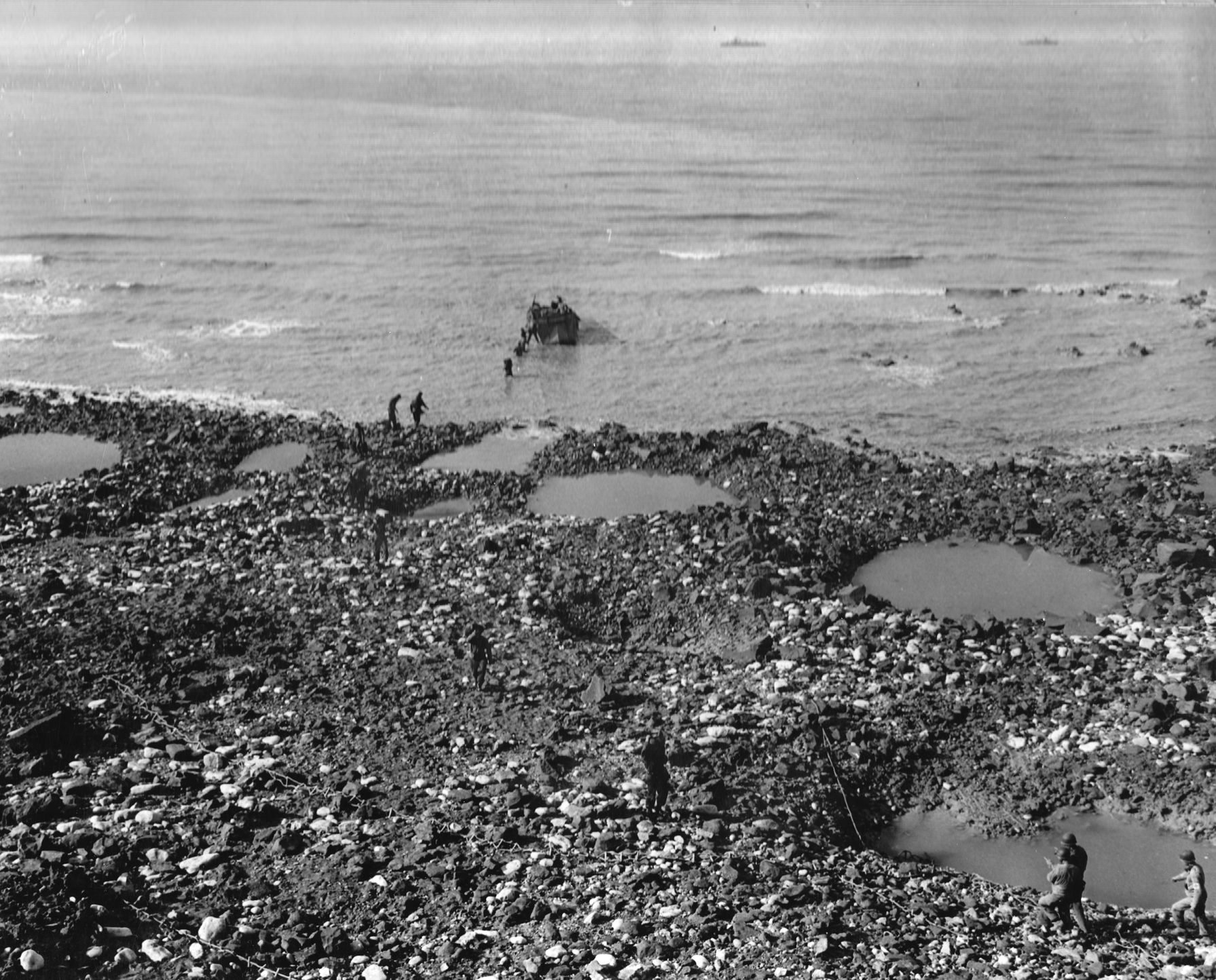
Prince remembered: “Puke bags, which had been issued to us prior to our embarking the LCAs, came into play. A few boys were leaning over the rails trying to revive themselves by letting the onrushing water wet their faces.”
Aware of the fate of their brethren aboard LCA 860, the Rangers in the remaining craft bailed with their helmets to help the bilge pumps extricate the excess sea water.
The surviving LCAs kept up a good formation as they headed toward the shore. Chugging in on the heels of the bombardment, the Rangers were in high spirits.
“It’s going to be a cinch,” one of them said.
“I don’t think they know we’re coming,” voiced another.
Suddenly, enemy rockets began to fall short and harmlessly into the water—a disheartening sign that the GIs were getting closer to shore. The Rangers’ spirits were further dashed when Lieutenant Gerald Heaney reminded them that only the enemy lay before them. No other American soldiers had landed ahead of the Rangers.
When the boats were 70 yards from shore, they turned to face the cliffs. Suddenly, one of the DUKWs was hit by 20mm fire, killing and wounding several Rangers.
Corporal Lou Lisko, a member of E Company aboard LCA 722, recalled the horror: “John J. Sillmon was hit in the upper chest. Blood spewed everywhere; Sillmon was groaning and moaning. Bullets from machine guns and rifles were flying in the air from the top of the Hoc and nobody dared to help him…. A photographer from the Stars and Stripes saw Sillmon’s blood and vomited all over my left leg.”
As the Rangers neared the shoreline approximately 35 yards from the base of the cliffs, the rope-carrying rockets were fired. Unfortunately, most of the ropes were waterlogged and had a difficult time reaching the cliffs. Some fell onto the clay bottoms, while others were simply cut by the German defenders. Eventually, portable rockets were employed from the shore, which made it easier for the subsequent Ranger units.
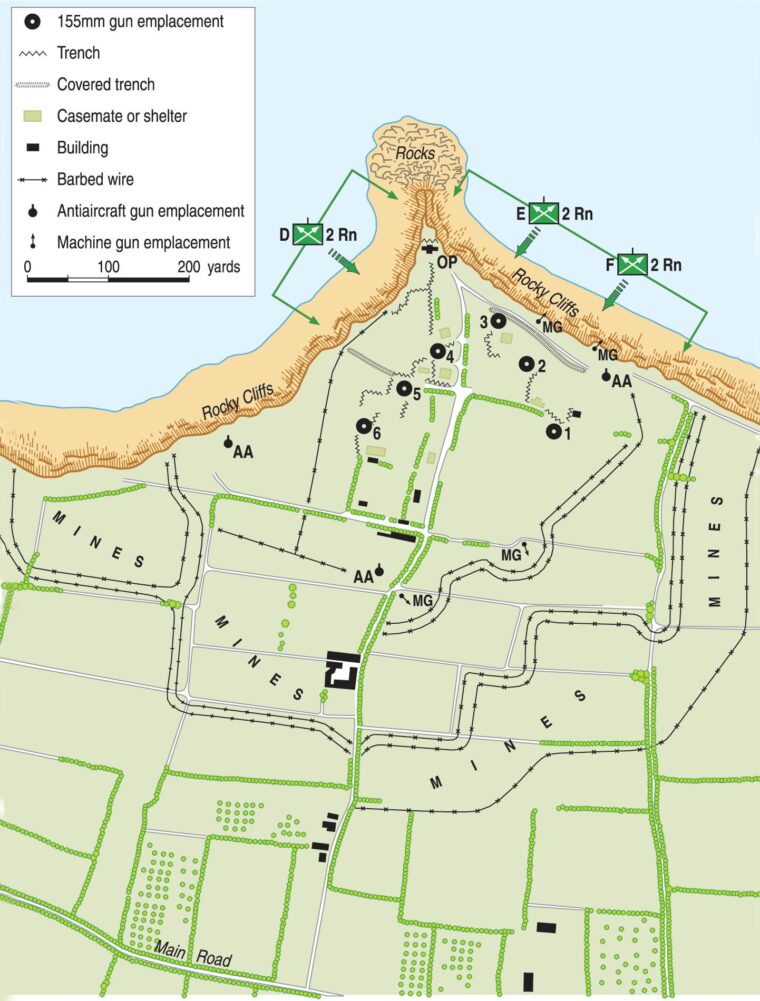
Hitting the Beach
The LCAs started to touch down at approximately 7:10. The boats, crowded but evenly spaced, hit the beach along a 500-yard front. Rudder’s LCA 888 hit the beach first. As soon as the ramp splashed down, intense enemy machine-gun fire erupted from the clifftops. The men of E Company quickly jumped off the landing craft and followed Rudder to shore. Some of the Rangers stepped into underwater bomb craters and sank out of sight. The invisible holes were extremely difficult to climb out of because of the slippery clay bottom.
Lieutenant James Eikner, the last man off the boat, vividly recalled the scene: “I ran down the ramp and in the water about up to my knees and headed across what I thought was the beach and stepped into a shell hole that was covered with water. I went down over my head, and of course we were under fire. There was one machine gun especially on our left flank…. Some of our people were getting hit, and I remember one young man that was hit three times on the landing craft and twice more on the beach.”
When the Rangers reached the cliffs, they tried to free climb, using their bayonets to get hold points in the slippery rock face. However, even the best climbers made little to no progress. Subsequently, a 16-foot extension ladder with a toggle rope was brought in and set up on top of a 40-foot mass of mud and dirt. One of the Rangers climbed the ladder and cut footholds in the cliff with his bayonet. Then a second Ranger stepped on the ladder and assisted in raising the next section.
The enemy was pouring down death and destruction throughout the treacherous ascent. After much effort, T/5 George J. Putzek finally made it to the top. Lying flat on the crest and cradling the top rung under his arm, Putzek desperately held on while the other Rangers climbed the ladder. The remainder of Rudder’s boat team made it up to the Pointe in less than 15 minutes.
LCA 722 and another group from E Company landed 20 yards left of Rudder’s boat. Once again, the Rangers disappeared from view as they disembarked their landing craft.
Lisko remembered: “I watched up ahead and I saw some of them jumping neck deep and unable to walk. When my turn came, I saw the two Rangers ahead of me jump and disappear, so I decided to jump to the left. I fell chest deep with all my equipment, at the same time bullets were hitting the sea water around us.”
Unfortunately, the scaling ropes had been fired too early again, and only two of them (straight and ladder) reached the top of the cliff. The straight rope fell into a slight crevice, which offered the GIs some protection, but the rope ladder was hung up on an overhang and exposed to flanking fire. T/5 Edward P. Smith immediately grabbed the straight rope and easily scaled the cliff in a matter of minutes. Sergeant Hayward A. Robey, following Smith, opened up on several German defenders who were tossing grenades over the cliff; three enemy soldiers were shot, and the rest retreated.
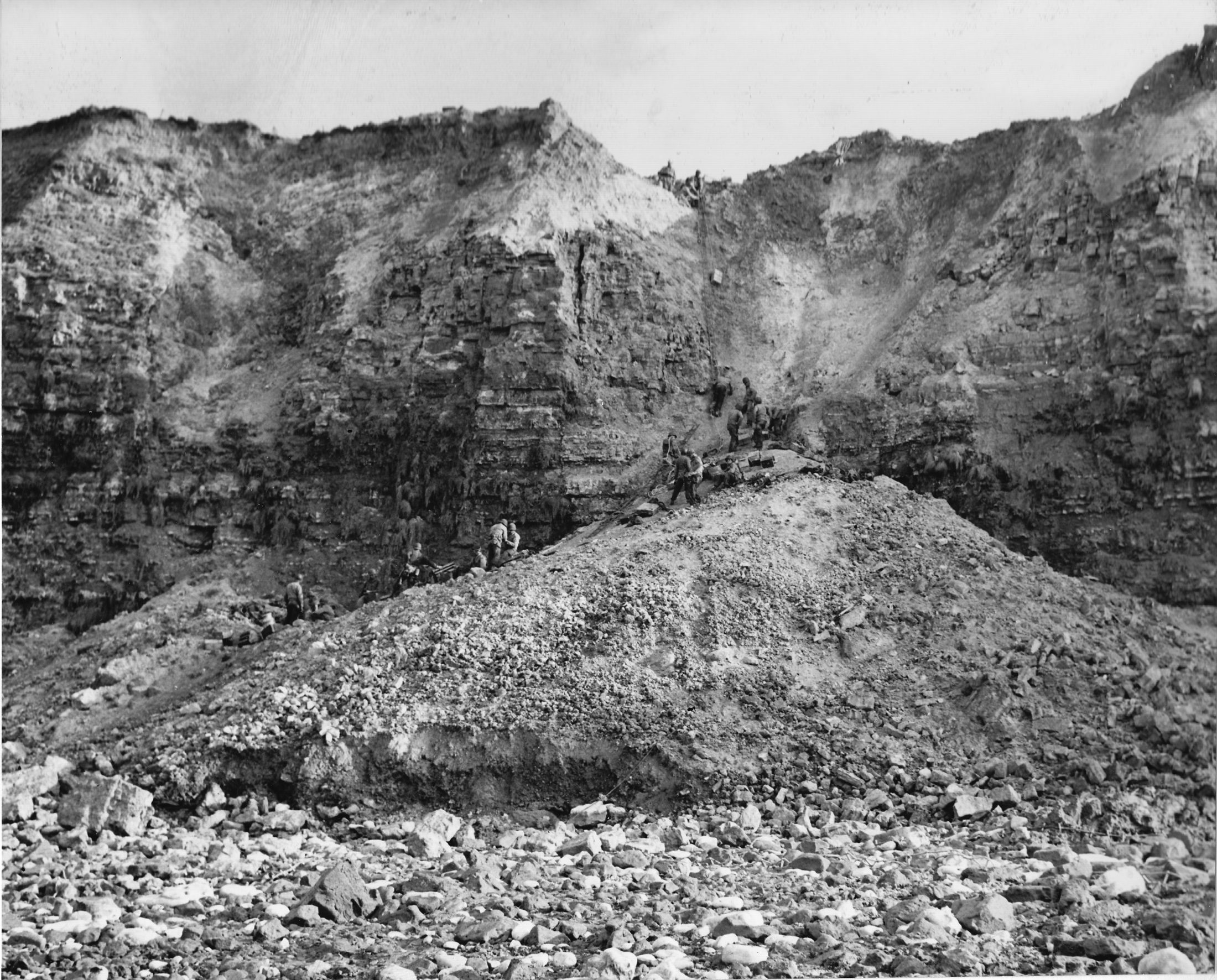
“To Hell With It”
Private First Class Frank H. Peterson, who had been wounded on the beach, positioned his body in the small niche and inched his way up the rope behind Robey. Once the three comrades reached the top, they proceeded to their next objective, the 155mm guns.
Running to the left of E Company was LCA 668, transporting the Rangers from D Company. Impeded by rocks and boulders, the boat grounded to a halt approximately 20 feet short of the beach.
First Sergeant Leonard Lomell, commander of LCA 668, recounted the landing: “I wasn’t supposed to land there, but because we were running behind schedule, we said, ‘to hell with it.’ When the ramp splashed down, I stepped off the boat and was the first one shot. The bullet went through what little fat I had on my right side. It didn’t hit any organs but it spun me around and burned like the dickens. There was a small crater there underwater. I went down in water over my head with the spare rope, the hand launcher and my submachine gun.”
Only three of the six rockets carried over the cliff edge—two rope ladders and a toggle. Sergeant Bill Vaughn, D Company’s best climber, was ordered to climb the toggle rope first. With BAR in hand, Vaughn easily shinnied up the cliff. The other ropes, however, would prove to be much more difficult to climb.
According to Private Sigurd Sunby: “The rope was wet and kind of muddy. My hands just couldn’t hold; they were like grease, and I came sliding back down. I wrapped my foot around the rope and slowed myself up as much as I could, but still burned my hands.”
Captain Otto Mansy’s Orders
The last boat to reach the shore was LCA 883 carrying the men of F Company. Captain Otto Mansy, commander of F Company, ordered the coxswain to land near the cliff jutted outward, which protected the Rangers from the flanking machine-gun fire that had raked the other units. As a result, they landed about 100 yards from the designated touchdown point.
On the ride in, Mansy also noticed that the scaling ropes fired by the previous boats were falling helplessly short of the cliffs. “Don’t fire those ropes until I give the word! We’ve got plenty of time,” he yelled to the British coxswain. To ensure that Captain Mansy’s orders were followed, Lieutenant Richard A. Wintz pulled out his pistol, pointed it at the British sailor, and said, “If you drop those gates or let those charges go before I give the order, I’ll put a bullet in your head.”
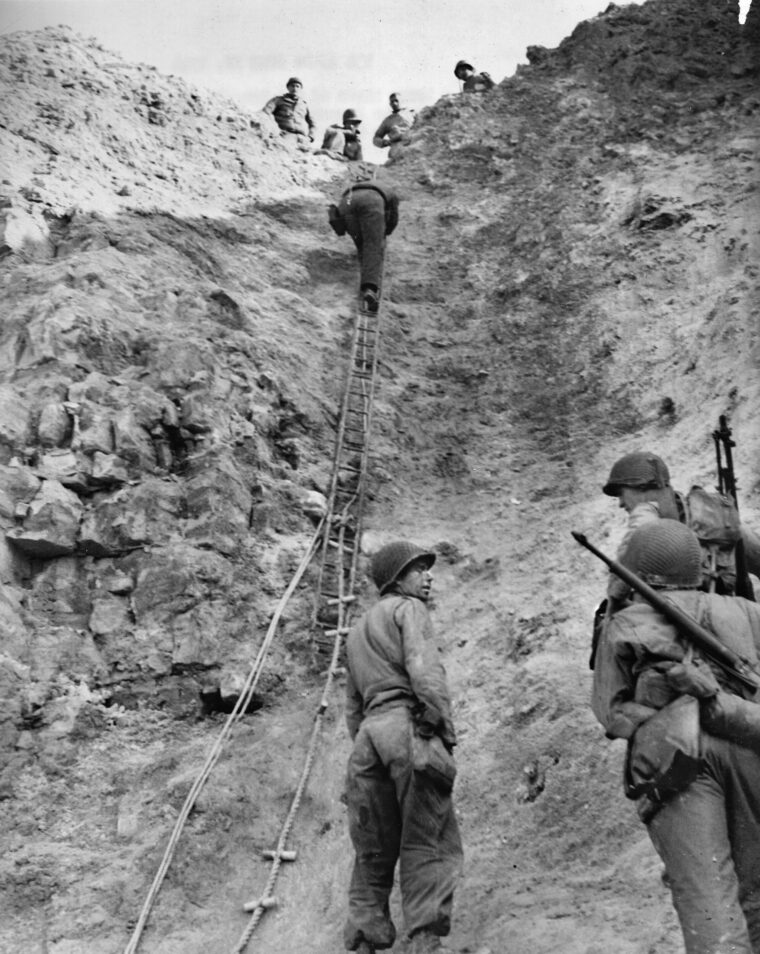
When the ramps went down, Mansy shouted, “Go!” The rest of F Company followed. Snipers and enemy machine gunners opened fire from the rocky heights, churning up the beach below. Running as fast as they could, the Rangers found safety at the base of the cliff. Private First Class Raymond A. Cole and Staff Sergeant Robert G. Youso started to climb the rope ladders while the other Rangers waited their turn. Meanwhile, Captain Mansy strolled up and down the beach offering encouragement and advice to his men.
Breaching the Atlantic Wall
At approximately 7:30, Pfc. Cole slithered over the top of the cliff. Suddenly, a shot rang out. Moments later, Sergeant Youso pulled himself onto the shelf. Lying in the dirt a few feet away was Private Cole.
“Cole’s been hit!” yelled Youso. Keeping low, Youso waited patiently for T/5 Herman Stein and Sergeant Jack Richards, who were both following close behind. When Stein and Richards reached the top, they found Cole dead.
Lieutenant Wintz, encouraged by the overall success of the previous climbers, picked up the plain rope and began his ascent. He was exhausted. The ropes were wet and muddy, and the slippery clay made it virtually impossible to get a good foothold. After exerting all his energy, Wintz finally reached the top. He then organized six other Rangers into a squad and immediately set out for the German guns.
Once Rudder’s Rangers disembarked the LCAs, it took most of the men 15 to 20 minutes to scale the rocky cliff. By 7:30, the battalion had lost two LCAs, one DUKW, and more than 20 Rangers killed or wounded. However, they had breached Hitler’s formidable Atlantic Wall.
It was now time to focus all their efforts on finding and destroying the big 155mm guns, cutting off enemy communications, and holding their positions until reinforcements arrived. For the 2nd Rangers, the worst was yet to come.
Missing Gun at Position Number Three
On top of the Pointe, the Rangers found themselves in a bewildering wasteland of mass confusion. The expected landmarks were gone; bomb craters and mounds of debris were everywhere, obscuring paths, trenches, terrain features, and fortifications.
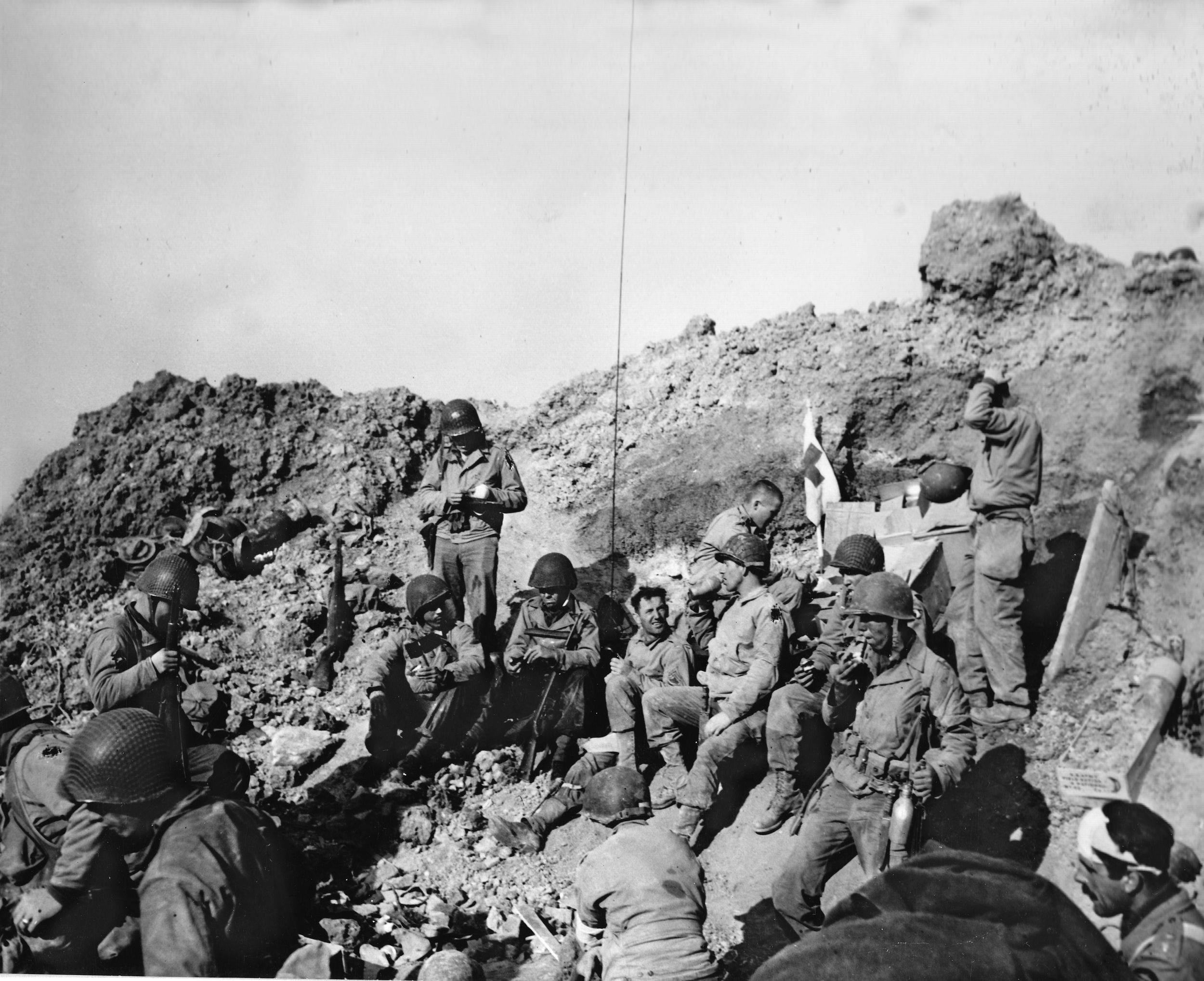
In his book, Rudder’s Rangers: The True Story of the 2nd Ranger Battalion D-Day Combat Action, Ronald Lane described the scene: “The bombs and naval bombardment had left the top of the cliff in such a state that it looked like craters on the moon.”
Although the bomb craters provided excellent cover and concealment from enemy fire, the chaos of holes and debris severely impacted a soldier’s orientation and hindered communications with other units.
In spite of all of the confusion, the attack proceeded as planned. Each company was divided into four equal sections and assigned a part of the enemy’s defenses. The E Company objectives were to destroy the number three gun, set up defensive positions on the coastal highway, and wipe out the concrete observation post. F Company was responsible for destroying the antiaircraft gun on the eastern flank and gun positions one and two. They would then join the rest of the battalion on the coastal highway.
On the western flank, D Company would take care of gun positions four, five, and six, then advance inland toward the coastal highway. From there, the battalion would cross the highway and establish a roadblock, preventing the Germans from bringing up any reinforcements from the Grandcamp area. One section from E Company would remain on the Pointe to organize a defensive perimeter for battalion headquarters.
The third E Company group, commanded by First Sergeant Robert Lang, climbed the Pointe with other Rangers from Rudder’s boat. As soon as the men scaled the cliff, they immediately set out for gun position number three. Edging carefully toward the location, they were shocked when they discovered broken wood and steel jutting awkwardly out of the casemates.
“Man, the Navy really did a good job on them, didn’t they, Sarge,” said one of the men.
“Yeah, but something’s wrong,” replied Lang. “There’s no gun here. Looks like the Krauts had a telephone pole sticking out to make it look like a gun. Wonder what they did with the gun?”
The men from E Company immediately looked to their next objective, setting up defensive positions on the coastal highway.
On the left flank, a section from F Company was slowly advancing toward its objective, gun positions one and two. Crawling from shell hole to shell hole, the Rangers finally reached the gun emplacements only to find them empty. The Rangers, although disheartened, remained focused on their next objective. Sergeant “L-Rod” Petty led the men to one of the exit roads where they linked up with Lieutenant Richard Arman’s F Company group.
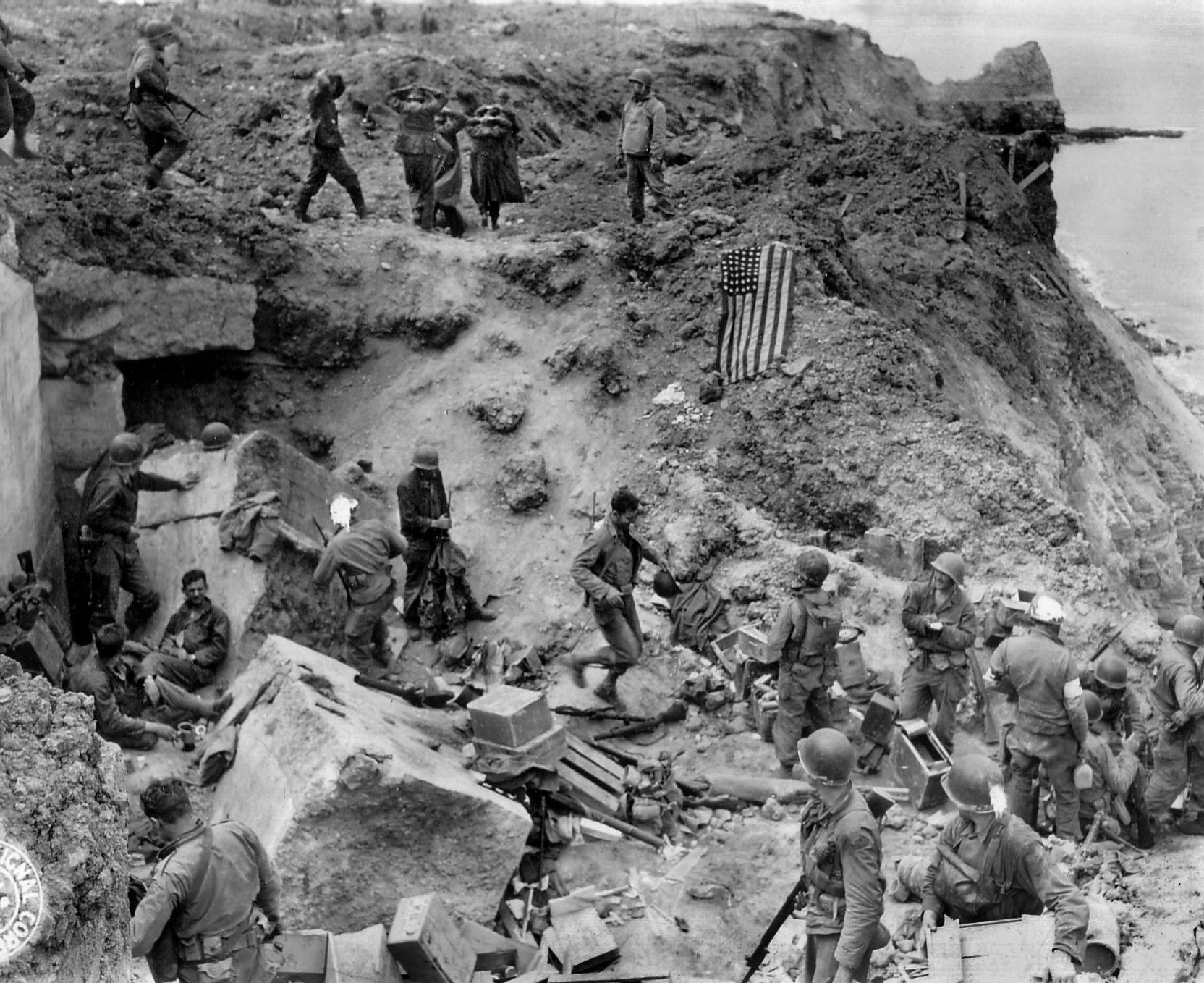
Lomell Finds the Missing Guns
Meanwhile, on the extreme right flank, 2nd Platoon, D Company quickly made its way toward gun positions four, five, and six. Sergeant Lomell, Lieutenant George Kerchner, and 12 other D Company Rangers went after gun number four initially. When they arrived at the casemates, they discovered that the 155mm gun was gone. Next, they advanced to gun position number six under continuous machine-gun and sniper fire. Again, the casemates were empty.
Some of the Rangers had noticed wheel tracks leading out from the gun emplacement. Could it be that the guns were still nearby? While a few of the men stayed behind to deal with the German threat, Lomell and the rest of the D Company Rangers followed the wheel tracks south in the direction of the coastal highway.
During the advance, Lomell could not stop thinking about the missing guns. Once D Company had reached the coastal highway and set up its roadblock, Lomell and Staff Sergeant Jack Kuhn decided to follow a sunken road. The double-hedgerowed lane led south of the highway just at the head of the D Company position.
Lomell recalled the scene: “It looked like something heavy had been over it [the road]. And so Jack and I went down this sunken road not knowing where the hell it was going….”
Moving cautiously in order to avoid enemy mines, the two Rangers came upon a camouflaged draw. Lomell noticed it first and immediately held out his hand to stop Kuhn, turned toward him, and whispered, “Jack here they are. We’ve found ‘em.”
While Kuhn covered him, Lomell placed thermite grenades in the recoil and traversing mechanisms of two guns.
“I depended on Jack to give me cover to protect me,” said Lomell. “While I was in there I couldn’t see the Germans, but I figured they were close by. By using the thermite grenades, I tried to weld moving parts, gears, cranks, hinges, breech blocks, anywhere I could find to place a couple of thermite grenades. Through their intense heat, they would weld moving parts together and render the guns inoperable. That moving, flowing, molten metal, wherever it eventually got to, must have done the trick. I don’t think I spent 10 minutes, all told, destroying those guns. I was satisfied that I had done what I was trained to do. We never looked back. We didn’t waste a second.”
After Lomell destroyed the two guns, he used the butt of his submachine gun to smash the sights on five heavy guns. Then, the two sergeants quickly ran back to the roadblock to collect more grenades. When Lomell and Kuhn returned, they proceeded to more fully disable the three remaining guns.
Although the Rangers had climbed the rocky cliff, destroyed the big 155mm guns, established a roadblock, and cut off German communications, the battle for Pointe du Hoc was far from over. Now, the 2nd Rangers had the unenviable task of holding their positions until relieved.
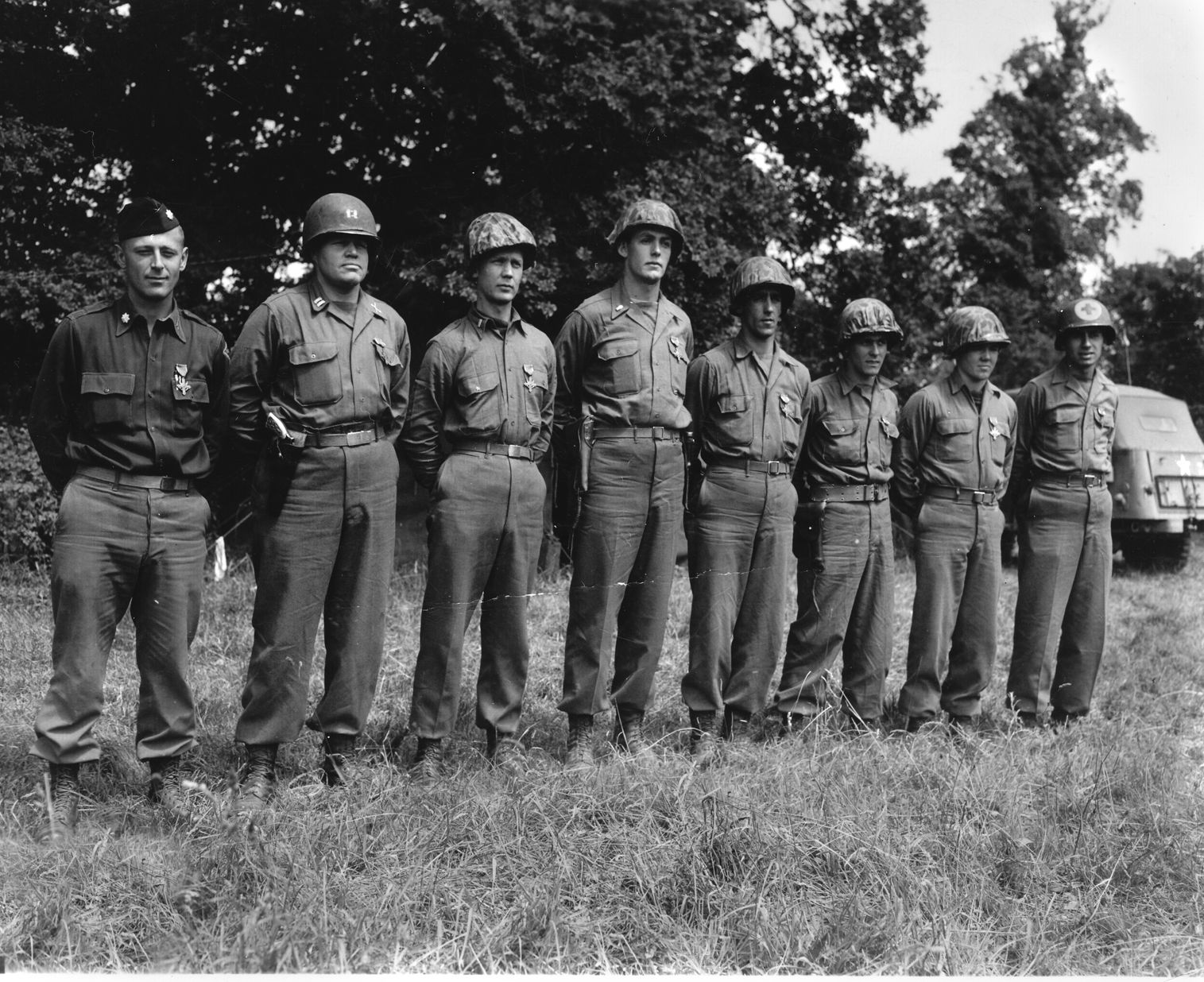
Two Days of German Counterattacks
The Germans, who still occupied many areas on the Pointe, knew every inch of the terrain and were mounting a stubborn defense. To make matters worse, the Rangers were running dangerously low on supplies. To prepare for night defenses, the Rangers had to make a few alterations. It was reported that enemy strength during the day had been south and southwest of the highway positions. Therefore, the Rangers decided to strengthen their defensive positions beyond the coastal road.
Meanwhile, a task force made up of the 5th Rangers, 2nd Rangers (Companies A, B, and C) and the 116th Regiment was planning to enlarge the Omaha beachhead and relieve the beleaguered companies on Pointe du Hoc. The plan called for the task force to follow the coastal road west until it reached the road junction. Here, they would execute a flanking movement and assault the enemy in a frontal attack.
At 6 am, A Company, 2nd Rangers took the lead, followed by Companies B and C. Little to no enemy resistance was encountered until they entered the town of St. Pierre du Mont, where they met snipers and heavy machine-gun and artillery fire.
At first, men and tanks from the task force were confused because Rudder’s Rangers were firing captured German weapons. Fortunately, a couple of the 2nd Rangers emerged from their holes waving American flags and were soon recognized by the attacking force. The renewed attack was too much for the Germans, and enemy resistance quickly faded. The 2nd Rangers on Pointe du Hoc were relieved around noon on June 8, D-Day+2. The fighting on the cliffs was finally over.
For two days, the 2nd Rangers had held out against heavy German counterattacks. They scaled 100-foot cliffs under intense enemy fire, destroyed the heavy guns that could have been deployed, assaulted enemy fortifications on the Pointe, cut off enemy movement along the coastal highway, and bravely and tenaciously held their positions.
In the end, less than half the original force of slightly more than 200 remained standing. On February 22, 1945, the 2nd Rangers received the Presidential Unit Citation “for outstanding performance of duty in action.”
“The First American Forces on D-Day to Accomplish Their Mission”
Years later, Eikner was absolutely correct when he stated in his oral history: “Had we not been there we felt quite sure that those guns would have been put into operation and they would have brought much death and destruction down on our men on the beaches and our ships at sea…. The Rangers at Pointe du Hoc were the first American forces on D-Day to accomplish their mission and we are proud of that.”
Ten years after the Pointe du Hoc Rangers’ heroic deeds on D-Day, Colonel Rudder went back to the site with his 14-year-old son. Looking up at the cliff, he asked: “Will you tell me how we did this? Anybody would be a fool to try this. It was crazy then, and it’s crazy now.”
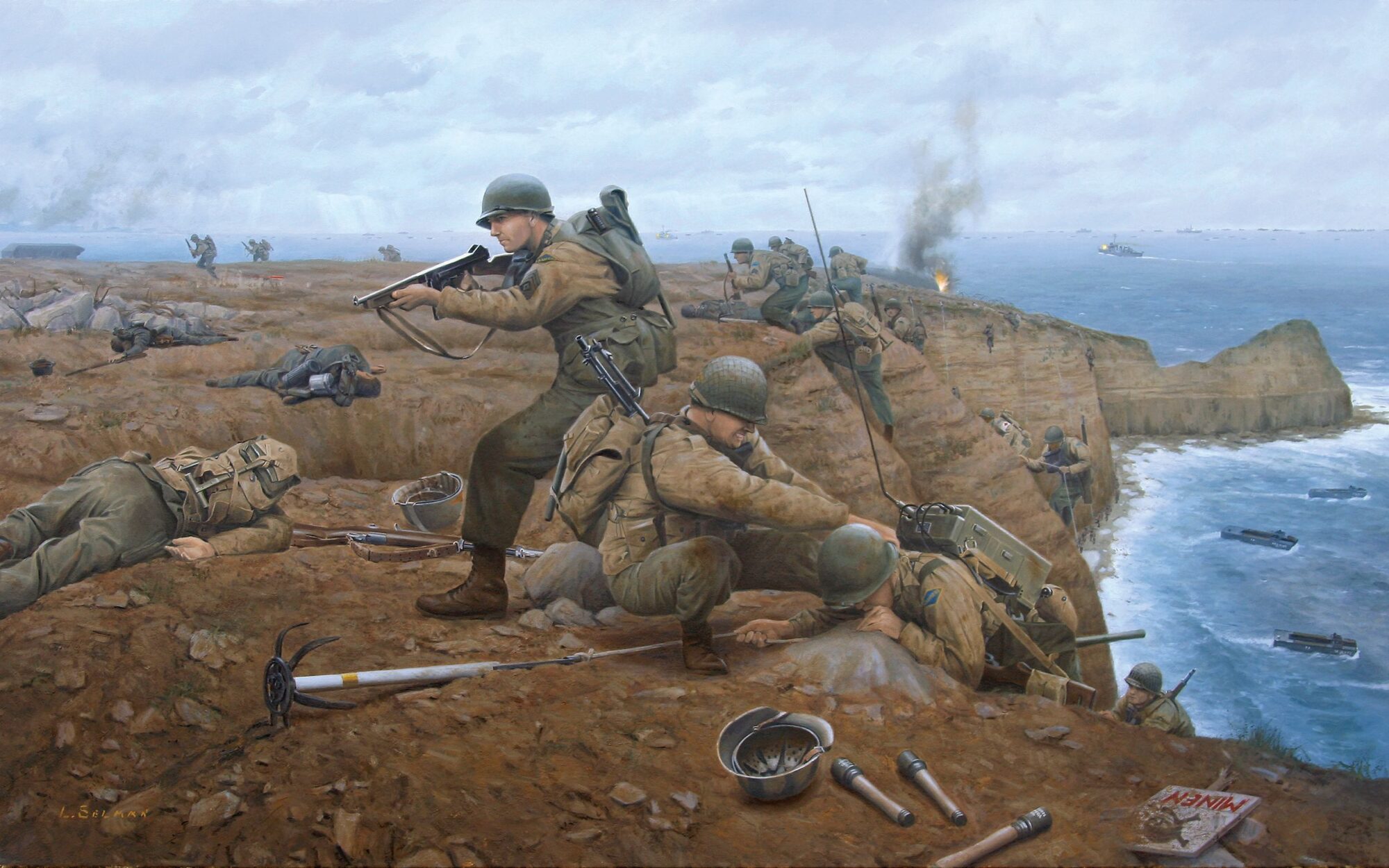
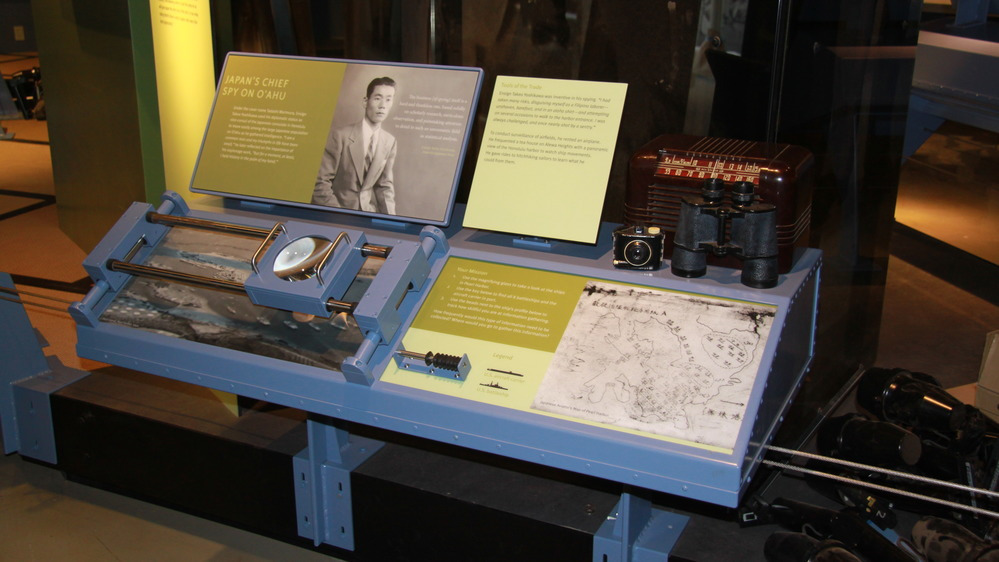
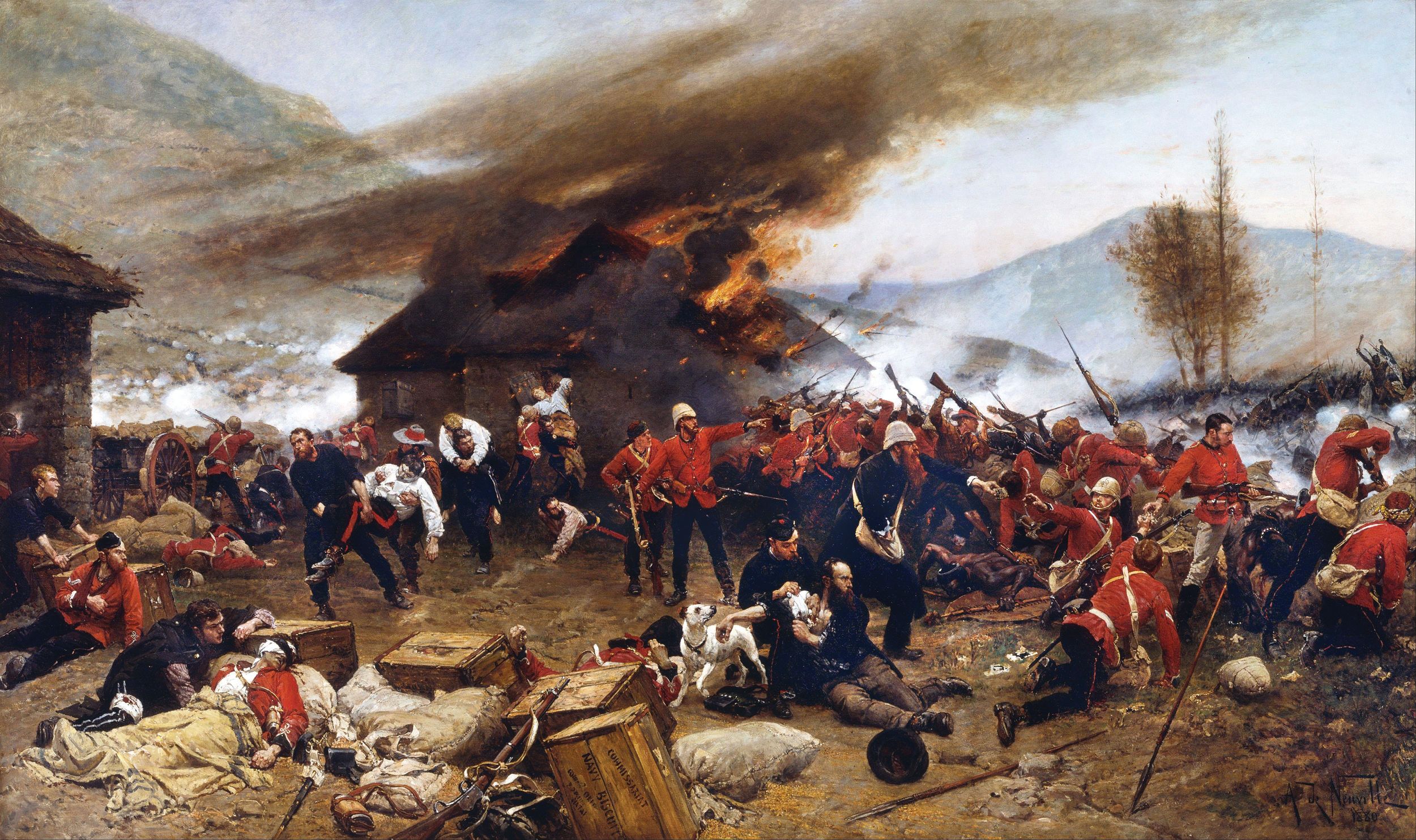
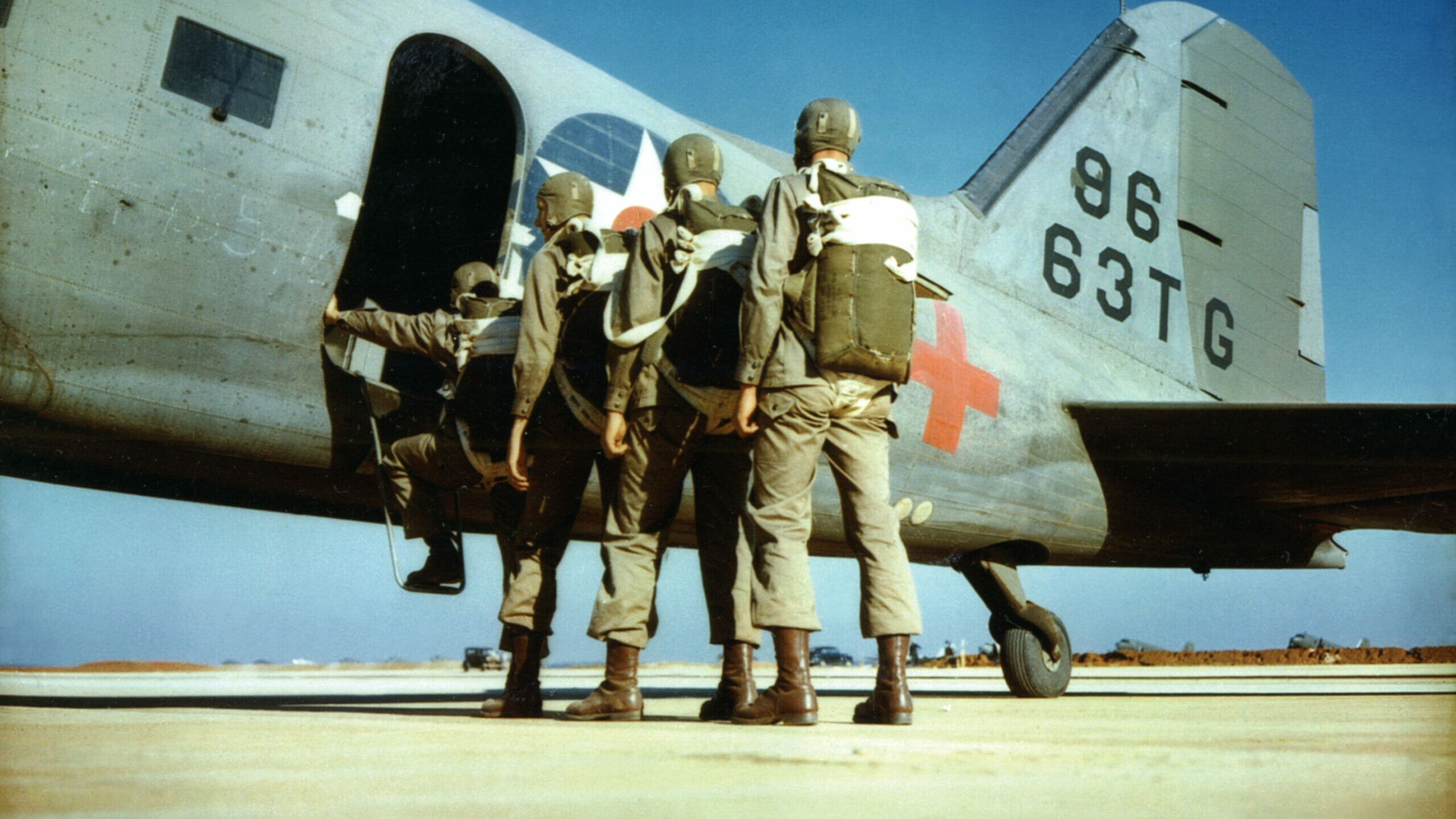
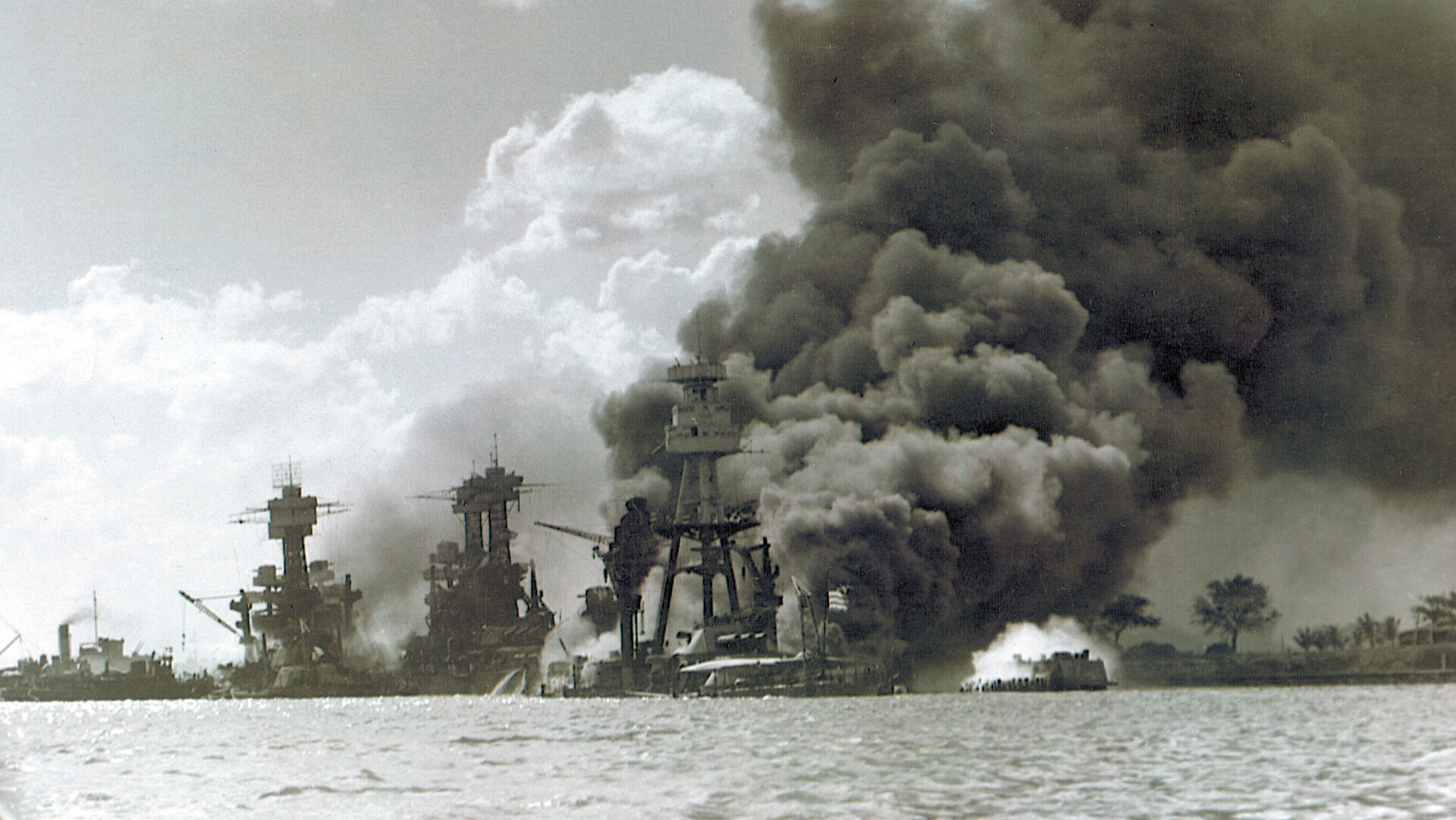
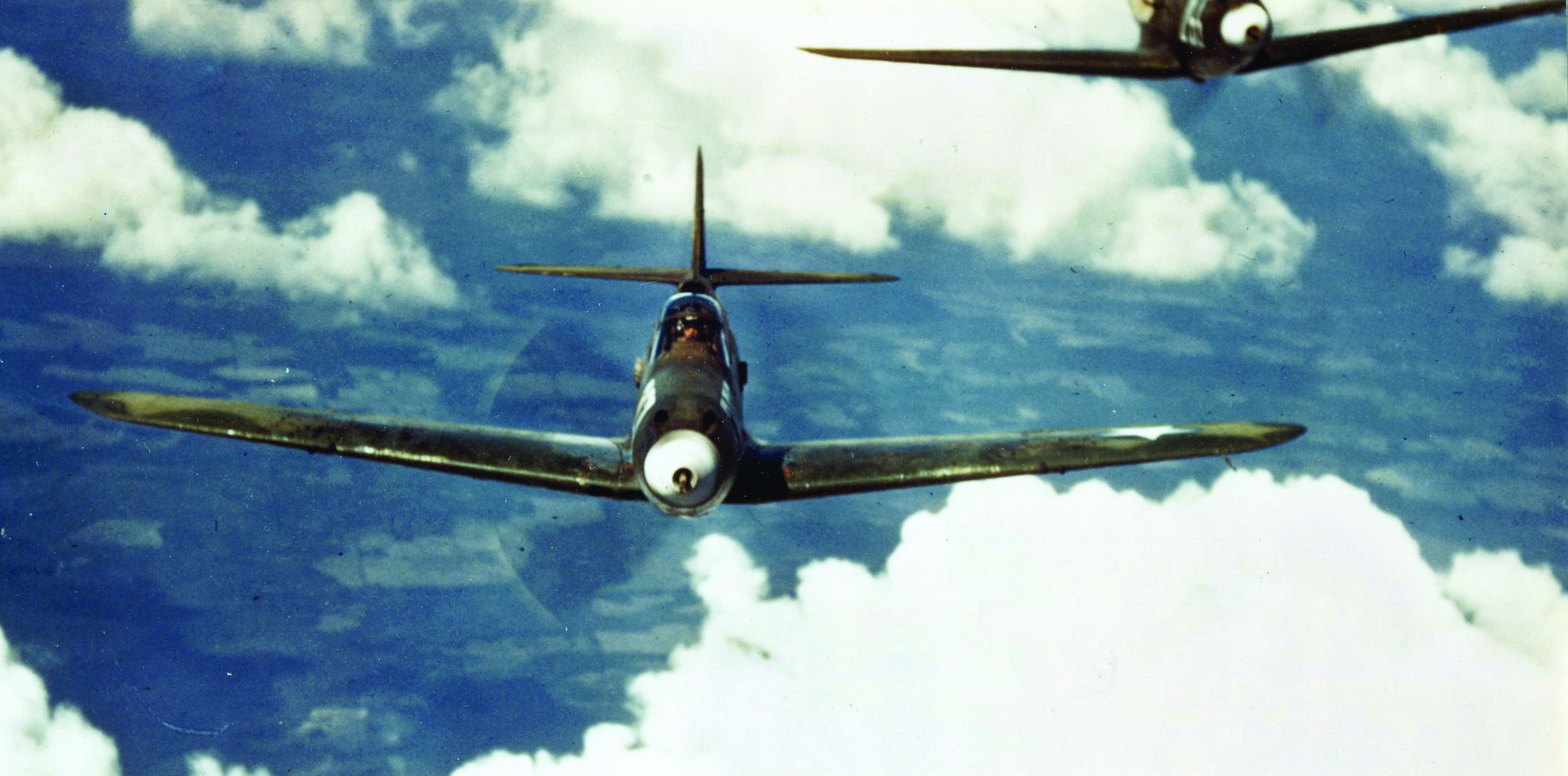
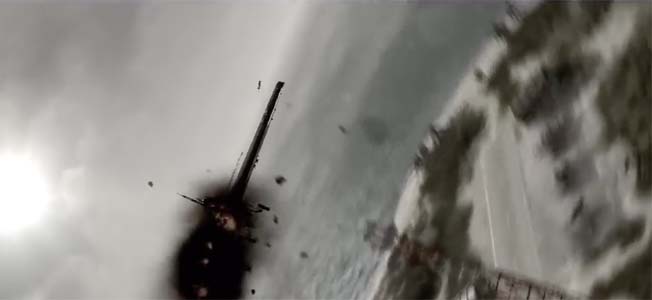
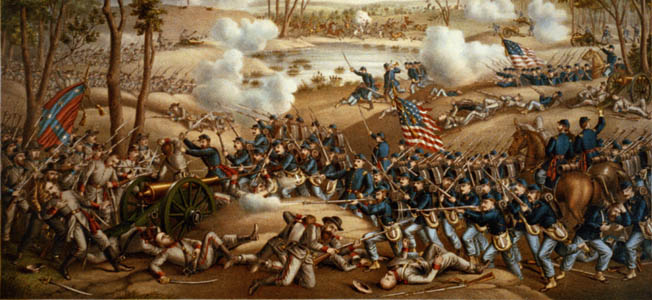
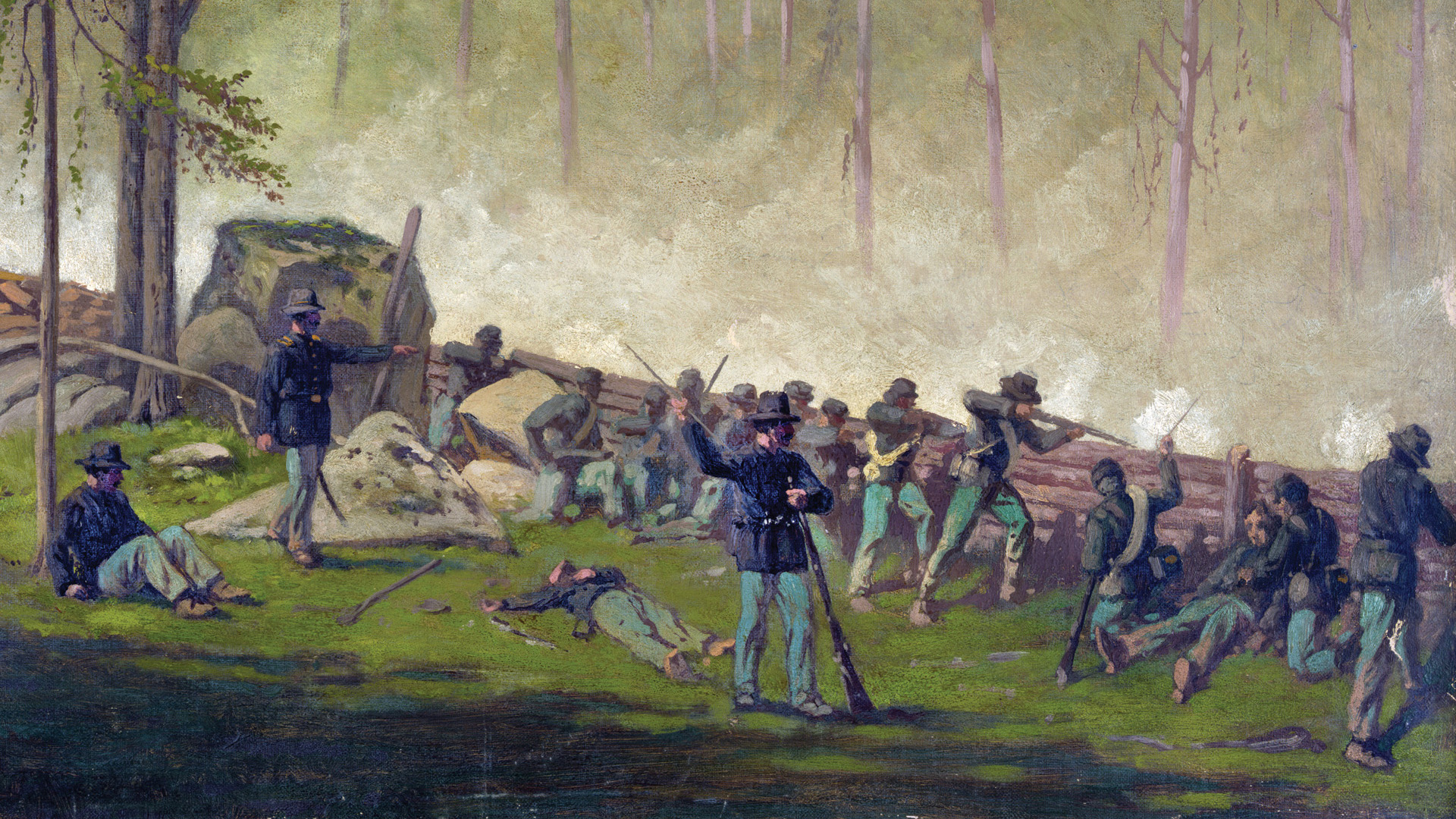
Thank you,I am now able to tell my children and grandchildren about Searching William Vaughan, climbing the cliffs, I and my children never meet Searching Vaughan, as he lost his life that day,I am his daughter- law, my children are his only grandchildren! I married his only son Bill.
Rangers Lead The Way.